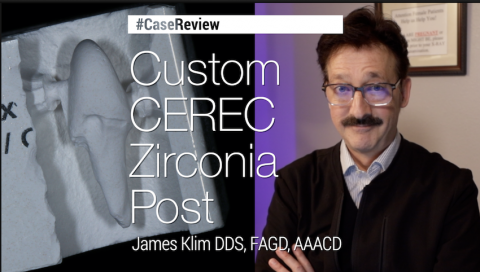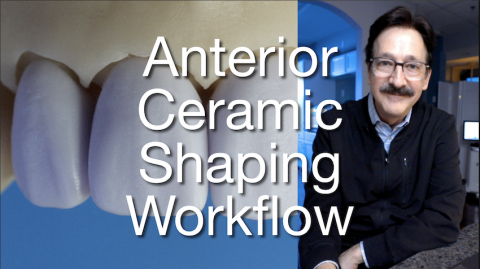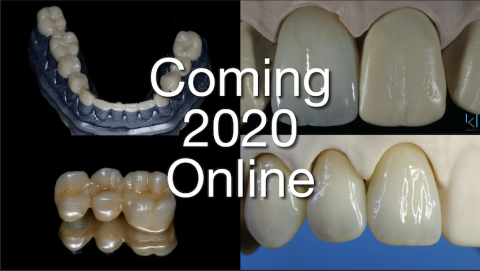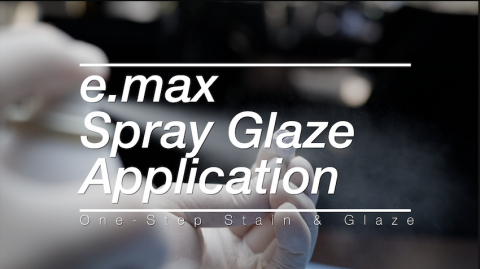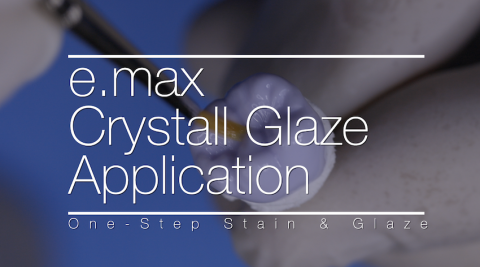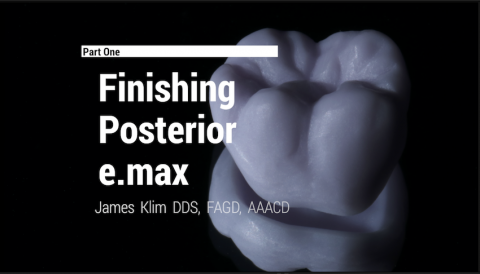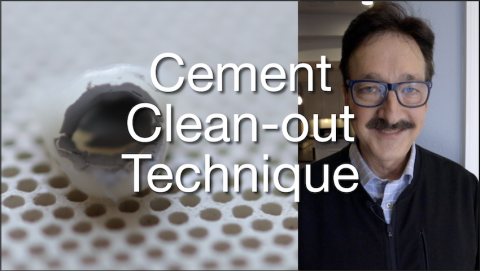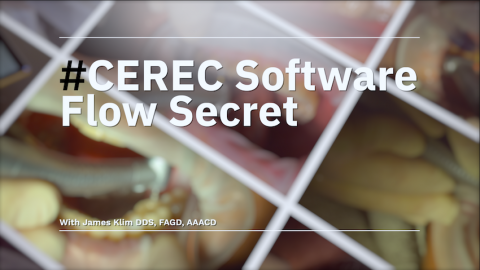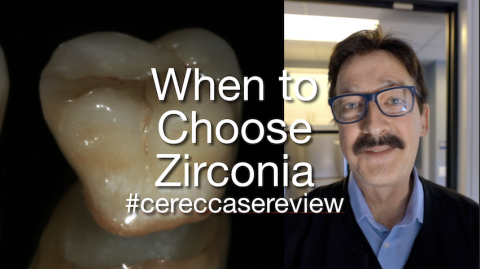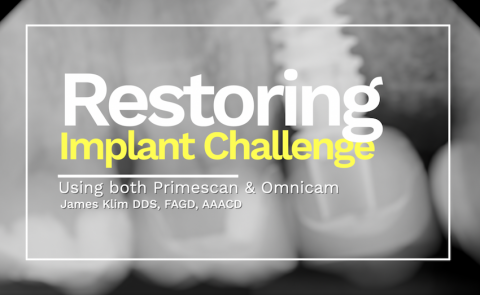Submitted by James Klim DDS, CADStar Host on 02/06/2020 - 9:30pm
Submitted by James Klim DDS, CADStar Host on 01/21/2020 - 9:11pm
This video will highlight my anterior ceramic shaping workflow for multiple anterior restorations, particularly when crossing the midline. However, anterior restorative success is mostly about understanding the patient's treatment expectations and then working through the biomechanical diagnosis and preplanning with either a traditional or digital wax-up.
The predetermined wax-up prototype is used for preparation guidelines and reduction, transitional restorations when using a two appointment protocol, and a digital BioCopy scan for digital design guidance. When these preliminary and preparatory guidelines are delivered to the
Submitted by James Klim DDS, CADStar Host on 01/13/2020 - 9:46pm
2020 will be a year of growth and excitement at the Klim Institute online CEREC training. We have an evolving software and will see several new applications that will provide a full range of care options for our patients. As exciting...new materials entering our CAD/CAM market this year.
I am most impressed with MiYO, a liquid ceramic that is painted on our ceramics like a stain and glaze. The results are magical. This will bring our chairside aesthetics applications to a whole new level not yet experienced in our industry.
The Klim Institute Online will be adding two new channels this year... Full Mouth with CEREC and
Submitted by James Klim DDS, CADStar Host on 12/16/2019 - 8:34pm
For posterior e.max restorations, spray glaze is one of the most effective ways to achieve an excellent luster finish. This video will walk through my spray glaze application technique for posterior e.max. For anterior teeth, I tend to apply brush-on glaze for more micro-surface texture control.
Make sure your whole team views this video, it is excellent for training and standardizing the e.max finishing workflow.
Submitted by James Klim DDS, CADStar Host on 12/15/2019 - 3:01pm
Brush-on IPS Crystall glaze tutorial for all e.max glaze firing cycles and avoid glaze bubbling and surface glaze firing pits. This is precisely the posterior e.max glaze/stain technique I use in my clinical theater.
Make sure your whole team views this video, it is excellent for training and standardizing the e.max finishing workflow.
Submitted by James Klim DDS, CADStar Host on 12/13/2019 - 12:55pm
This tutorial is the first part of the stain & glaze trilogy series for the Ivoclar rapid e.max firing cycle (and it works for all the e.max firing cycles). Once the restoration is milled, the e.max posterior restoration is efficiently shaped for morphological refinement, surface texture, and surface finish using the Dr. James Klim Meisinger JK03 Lab bur kit specially designed for CEREC users.
This video will show the burs and polishing workflow I use preparing e.max for either brush-on or spray glaze Make sure your whole team views this video, it is excellent for training and standardizing the e.max finishing workflow.
Submitted by James Klim DDS, CADStar Host on 11/17/2019 - 9:30pm
What is the best way to clean-out cement when there is a crown or cement delamination? This video will document the furance temperature and effective way to clean-out cement and avoiding damaging the ceramic. This technique is also an excellent way to denature cement when needing to separate and remove the TiBase from an abutment or one-piece crown/abutment restoration if the color needs further enhancing.
Use a resting temperature of 550. Just close the furance cover at 550 P3 without activating P3 cycle.
Submitted by James Klim DDS, CADStar Host on 11/04/2019 - 9:29pm
Submitted by James Klim DDS, CADStar Host on 10/14/2019 - 2:57pm
When do we, as CAD/CAM clinicians, choose a zirconia material over a lithium disilicate material in our clinical theaters? This CEREC case review video is an overview when making a decision on when to use zirconia and the steps for efficient Primescan Software design.
Materials and applications in this video:
- ZirCAD Multi
- ZirCAD LT
- Zirconia furnace indications (SpeedFire, CS4, Programat S1)
- Posterior Primescan CEREC software design flow (paralleling design flow for Omnicam most recent software)
Submitted by James Klim DDS, CADStar Host on 09/22/2019 - 4:22pm
Primescan provides the dream scanning situation for inlays and onlays. The best we have had yet in the years of CEREC upgrade scanning devices. There is a caveat about which version of the CEREC software can best handle the two-piece implant restoration in the premolar or anterior zone of the mouth. In the opinion of Dr. Klim, it is the 4.52 software which means we still need the Omnicam. This case review video will illustrate the planning and implementation to restoring an implant restoration on a non-ideal placed implant and creating the illusion of a smaller mesial-distal tooth using the combo of the Primescn and Omnicam. To

